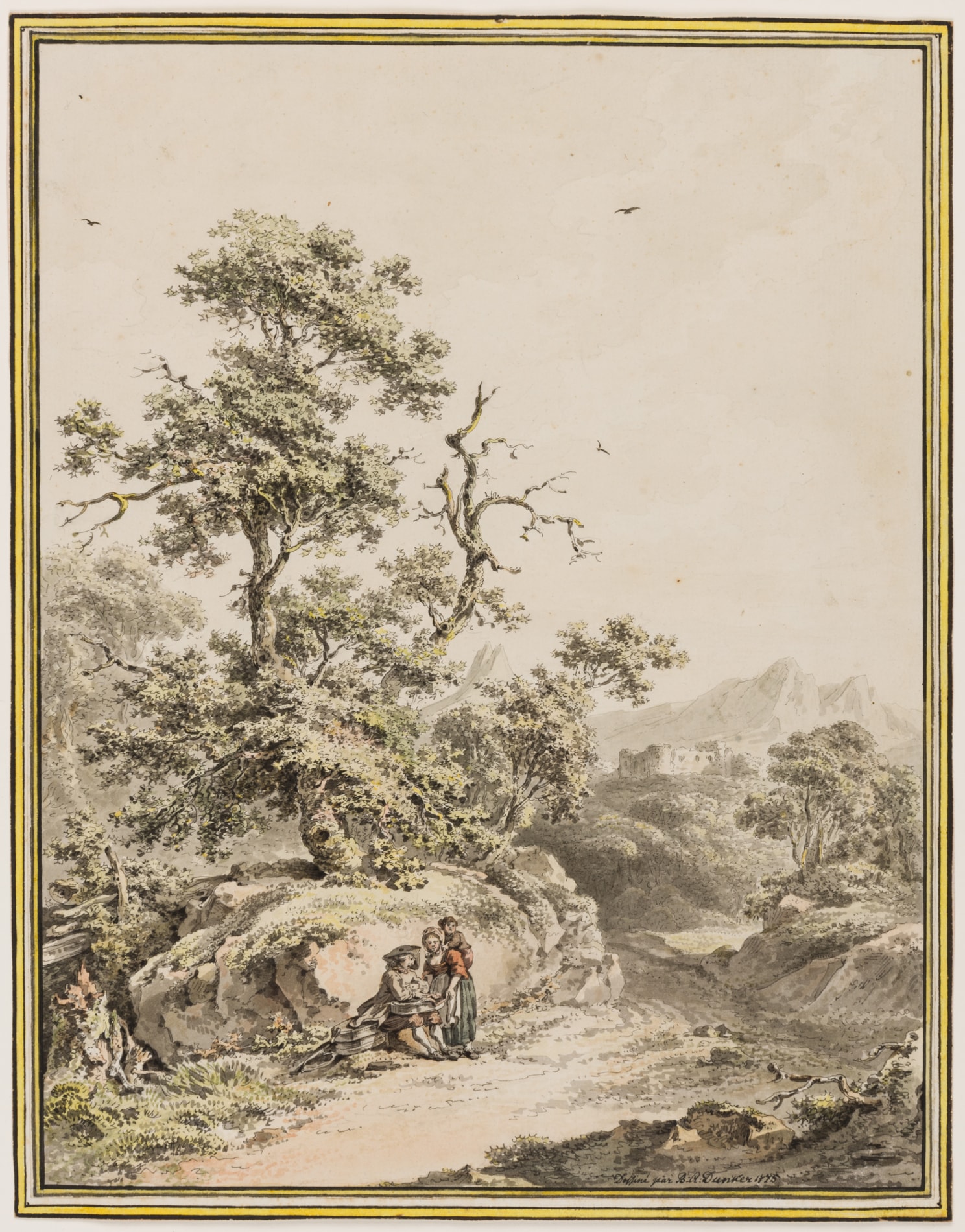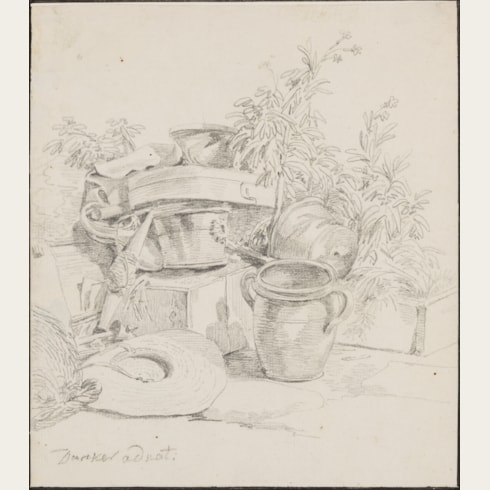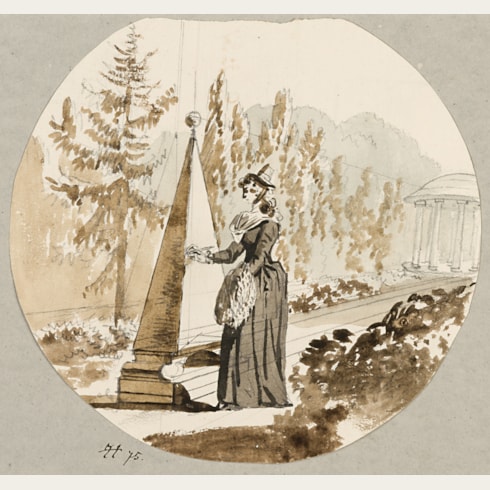Balthasar Anton DUNKER
(Saal 1746 - Bern 1807)
Landscape with a Peasant Family by a Path
Pen and black ink and watercolour, over traces of an underdrawing in black chalk, with framing lines in two shades of brown ink and yellow wash.
Laid down on an old mount.
Signed and dated Dessiné par B: A: Dunker 1775 near the lower right corner.
284 x 219 mm. (11 1/8 x 8 5/8 in.) [image]
290 x 223 mm. (11 3/8 x 8 3/4 in.) [sheet]
299 x 233 mm. (11 3/4 x 9 1/8 in.) [including mount]
Laid down on an old mount.
Signed and dated Dessiné par B: A: Dunker 1775 near the lower right corner.
284 x 219 mm. (11 1/8 x 8 5/8 in.) [image]
290 x 223 mm. (11 3/8 x 8 3/4 in.) [sheet]
299 x 233 mm. (11 3/4 x 9 1/8 in.) [including mount]
Balthasar Anton Dunker’s virtuoso landscape drawings range from Rococo to Romantic in mood. He first began making independent landscape drawings while in Paris, alongside his work as an engraver, and was probably inspired by the sketching expeditions organized by Johann Georg Wille. It was not until he settled in Switzerland, however, that Dunker began to produce landscape watercolours consistently, often going on sketching trips with the Swiss artists Sigmund Freudenberger and Johann Ludwig Aberli. He worked mainly in watercolour but also in gouache, black and brown ink, and pencil, and his drawings of this Swiss period can be divided into two main types; topographically accurate views of the countryside around Bern and imaginary or ‘ideal’ landscapes, often enlivened with ruins and castles.
The present sheet is dated 1775, not long after the artist began living and working in Bern. Finished, fully signed and dated watercolours such this were undoubtedly intended as autonomous works of art, to be sold to collectors. Indeed, many of Dunker’s finished watercolours of this period were sent to Wille in Paris to be offered for sale there, which may be why the artist elected to inscribe this work in French.
Among stylistically comparable watercolours by Dunker is a Painter Seated Before a Waterfall, signed and dated 1779, in the collection of the Kunstmuseum in Bern.
The present sheet is dated 1775, not long after the artist began living and working in Bern. Finished, fully signed and dated watercolours such this were undoubtedly intended as autonomous works of art, to be sold to collectors. Indeed, many of Dunker’s finished watercolours of this period were sent to Wille in Paris to be offered for sale there, which may be why the artist elected to inscribe this work in French.
Among stylistically comparable watercolours by Dunker is a Painter Seated Before a Waterfall, signed and dated 1779, in the collection of the Kunstmuseum in Bern.
A friend and pupil of Jacob Phillip Hackert, the German landscape painter and etcher Balthasar Anton Dunker (sometimes Duncker) studied in Paris with Joseph-Marie Vien and Noël Hallé, and was also much influenced by the German printmaker resident in Paris, Johann Georg Wille. Dunker began his career as a reproductive etcher, receiving commissions from the print publisher Gabriel Huquier, and his etchings after the paintings in the collection of the Duc de Choiseul, executed between 1770 and 1771, may be regarded as his first significant works. From 1773, Dunker lived and worked in Bern in Switzerland, producing views of Swiss landscapes, often in collaboration with the Swiss artists Sigmund Freudenberger and Johann Ludwig Aberli, as well as genre pictures, portraits and historical subjects. Dunkrer is perhaps better known today as a printmaker than as a painter, and his etchings and engravings are characterized by a level of detail and imaginative compositions. He also produced vignettes and book illustrations for such works as Louis-Sébastien Mercier’s Tableau de Paris, published in 1787, and wrote a number of satirical texts, often illustrated by the artist and published anonymously. An outspoken opponent of the French Revolution, Dunker wrote and published a number of anti-revolutionary texts between 1798 and 1800, and also drew political caricatures. Dunker died in poverty in Bern in 1807. His son, Philipp Heinrich Dunker (1781-1836) was active as a landscape painter and printmaker in Nuremberg.






